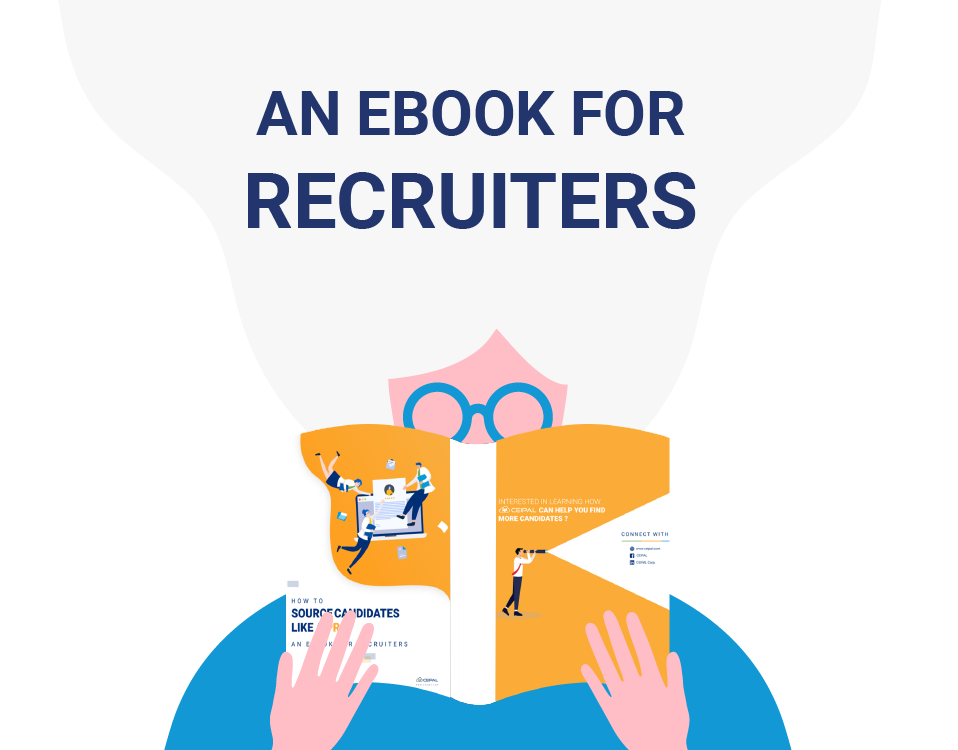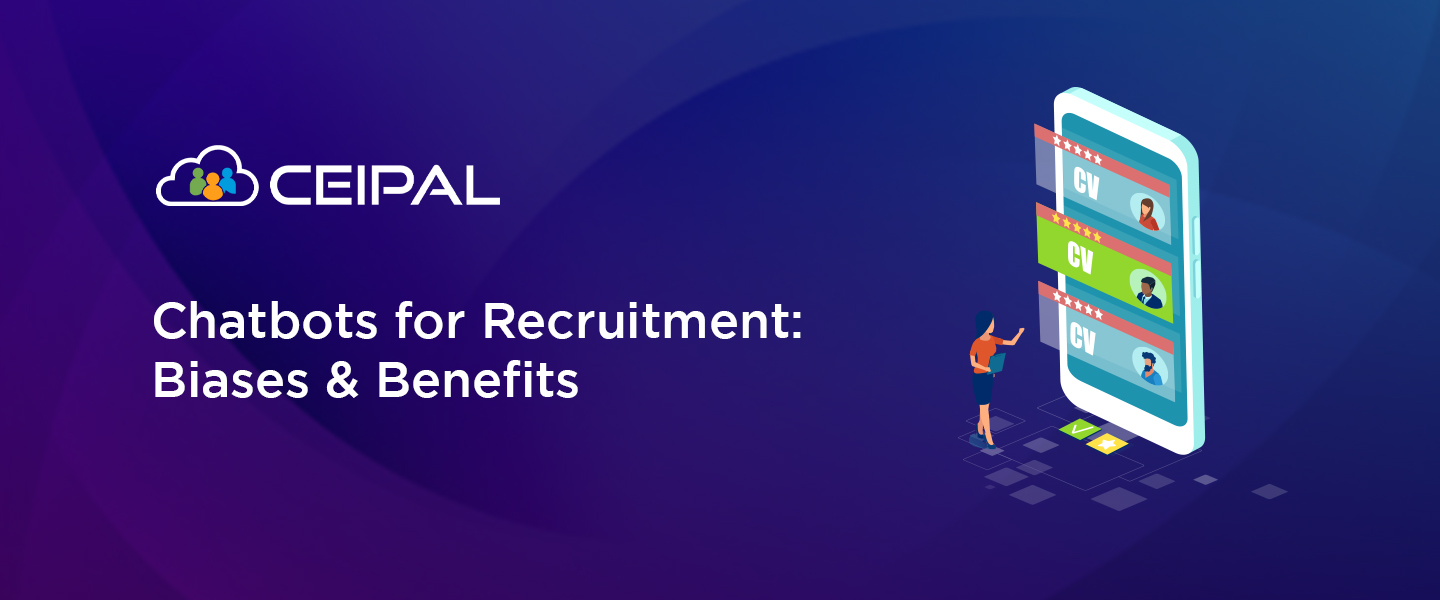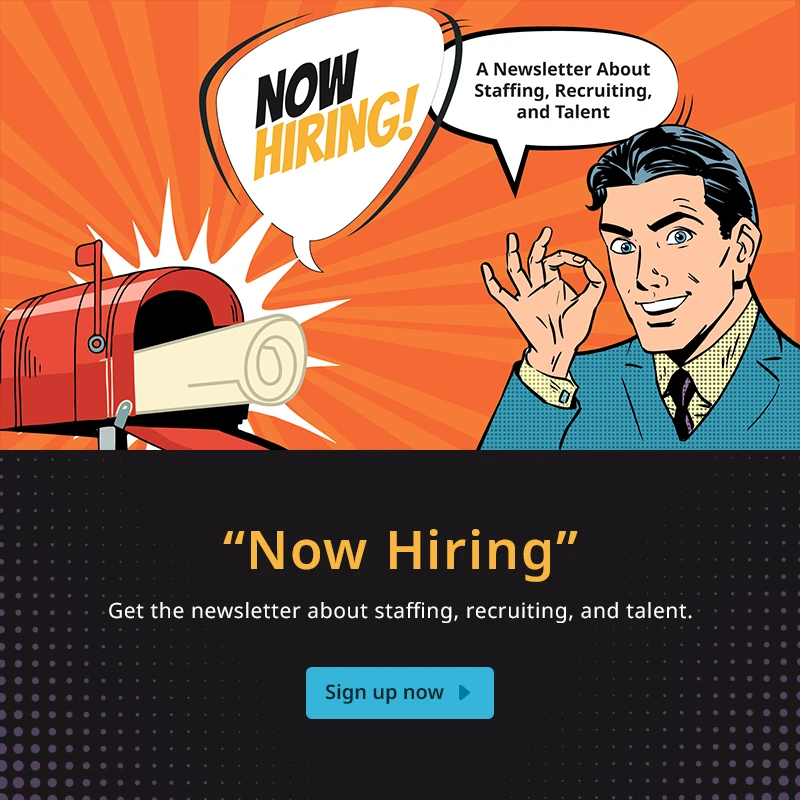Recruitment chatbots are conversational AI interfaces used during the recruitment process to collect information and begin the pre-screening processes. They act as hiring assistants that help recruiters and HR professionals automate the everyday mundane aspects of recruitment and can be used as:
- Application bots for gathering candidate information
- Skill-testing bots to evaluate candidates’ expertise
- Interview scheduling bots to automatically schedule interviews through calendars
- FAQs bots for answering candidates’ frequently asked questions
A recruiter gets multiple responses from candidates from many platforms (Email, social media, job boards, LinkedIn, etc.). It is difficult for a recruiter to be omnipresent and respond to numerous candidates across multiple platforms at the same time. Chatbots are 24/7 software solutions that can reduce the need for superfluous human intervention. A recruitment chatbot can collect information from all the bots into the ATS, where the database of candidates can be managed in a single platform.
Common Biases and Problems with Recruitment Chatbots
Although chatbots are pre-programmed algorithms that can be used at various stages of the recruitment process to help recruiters, there are numerous preconceived notions about using bots in recruitment. If not programmed correctly, recruiting chatbots can cause a commotion of negative impressions among candidates. Negative impressions are formed when the chatbots are unresponsive and start providing irrelevant information. This results in candidate dropouts and can damage an employee’s brand. AI-powered chatbots are built through machine learning (ML) and natural language processing (NLP) algorithms. These bots function based on input data and respond accordingly. One of the major concerns when implementing AI chatbots is that, despite the reputation of being intuitive, there are some chatbots that may not recognize key human traits such as cultural fit and work ethics.
Benefits of Recruitment Chatbots
1. Attracts GenZ
On an average day, a millennial spends almost 8 hours in a day online. In those eight hours, they spend 73% of their time in text and chatting. Hiring through chatbots has become very popular, especially with GenZ. These candidates prefer to text over other mediums of communication. With recruitment chatbots, recruiters can:
- Collect basic information of name, DOB, qualification, location
- Get the candidate to upload their resume
- Ask pre-screening and screening questions about their skills and experience
2. Saves Time with Automation
Hiring is time-consuming. The hiring time differs according to industry and position, but on average it takes around 36 days to fill a position. Recruiters spend a lot of time cold calling prospective candidates, gathering resumes, and getting contact information. Even if they gather this information, it is hard for them to manage all the information in one place. There are multiple submissions from multiple platforms, and there are numerous duplicate profiles in the databases due to a lack of centralized management of data. Using AI chatbots for recruitment:
- Takes one-third of the time recruiters would otherwise spend on just gathering information and sending responses (3x efficiency!)
- Manages all information gathered in a single platform
3. Easy and Short Communication
Communicating via chatbots is quick and to the point – unlike long-form emails. Chatbots are well-trained to carry out smart communications with candidates with specific intent. Even candidates use chatbots with clear intent. Recruitment chatbots are constantly trained and updated with NLP processes, which enables them to have contextual conversations at times.

Want to Source Candidates Like a Pro?
Read an eBook Designed for Smart Recruiters Like You
4. Enhances Candidate Experience
One reason recruitment chatbots are popular is that they reduce the burden of a recruiter while helping to improve the candidate experience. A large number of candidates experience a lack of communication and follow-up from recruiters. Candidates feel rejected when they do not receive any feedback or response. Also, though the human touch is quite important during recruitment, large organizations have been facing problems caused by intentional and unintentional human biases resulting in unfair recruitment practices. Recruitment chatbots remove any form of human biases and promote inclusivity and equal opportunities in the hiring process.
5. Application at Multiple Levels
Recruitment chatbots can be used at various stages of recruitment i.e., pre-assessment, screening, onboarding, etc. Depending on the requirements, organizations use recruitment chatbots in multiple ways by:
- Answering FAQs about the company, culture, job openings, job location, eligibility, etc.
- Integrating chatbots in career sites and employee referral portals
- Streamlining recruitment chatbots with ATS for proper data compilation
Reinvent the Way You Recruit
AI-powered recruitment chatbots automate many top-of-funnel recruiting activities by collecting data in real-time through multiple conversations across multiple platforms at once and then feeding that information to your Applicant Tracking System (ATS) and the internal database. Recruiter-facing chatbots are even built directly into the ATS platform, working together to tackle personal tasks and make it easier to share information across the ATS. With CEIPAL’s intuitive AI chatbot, you can:
- Collect candidate information
- Gather resumes
- Evaluate qualification and cultural fitness
- Showcase new job openings
Before the interview process begins, an AI-powered chatbot can evaluate each resume and candidate information and determine whether any one candidate is a good fit for the company. The goal of every HR professional is to increase the number of placements with quality talent. CEIPAL’s talent management platform allows recruiters to increase their productivity while attracting and nurturing talent.







